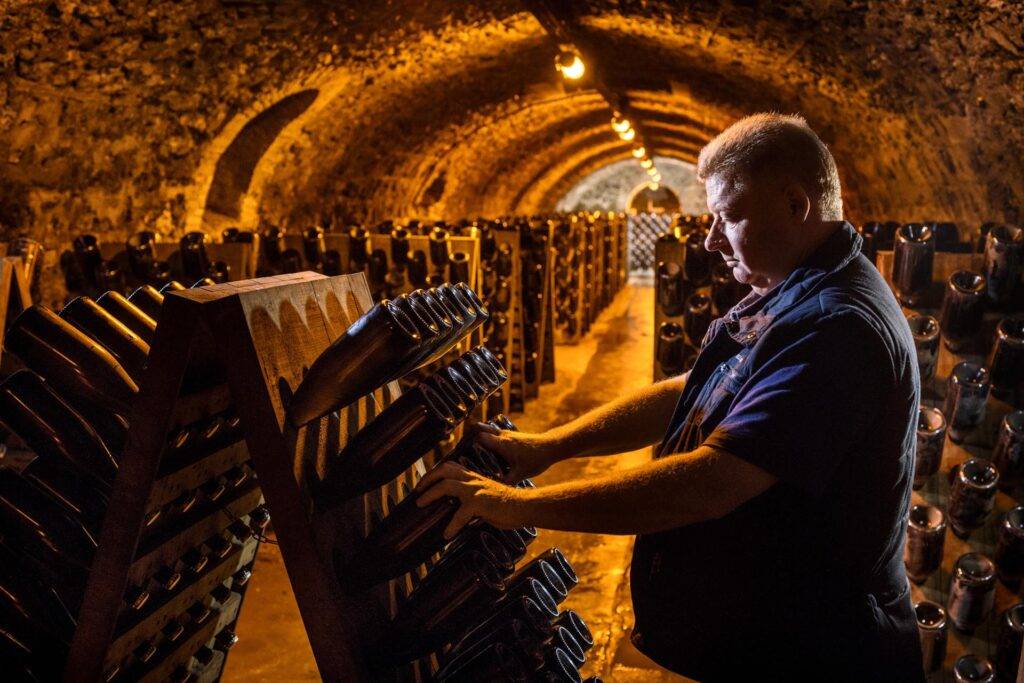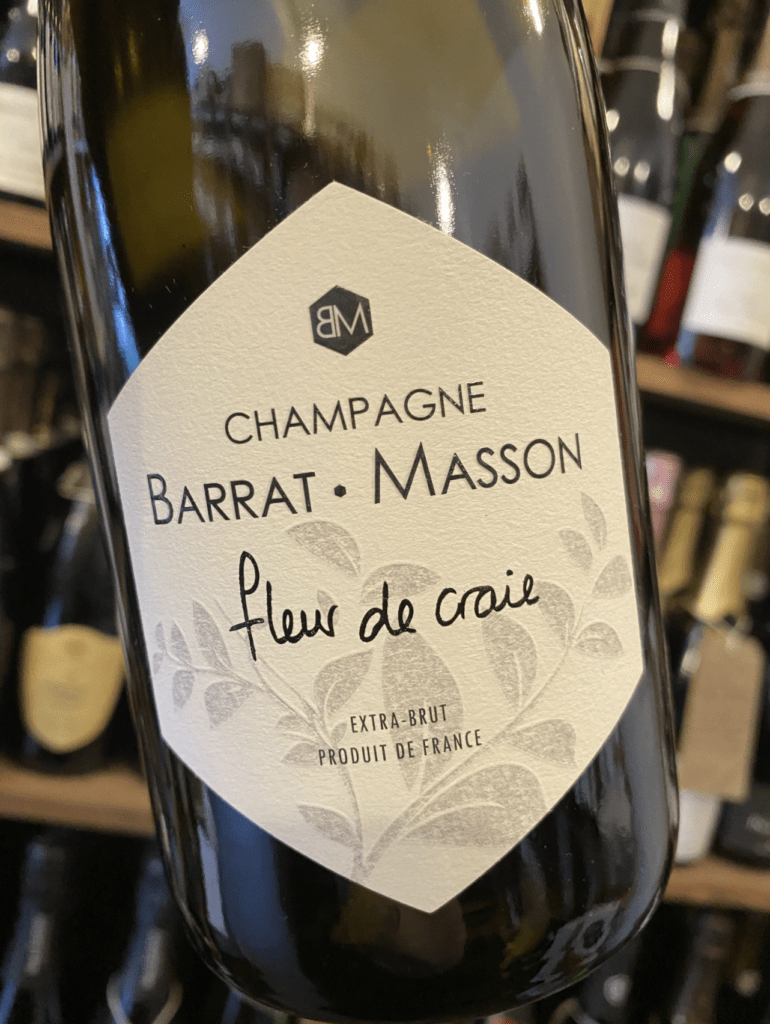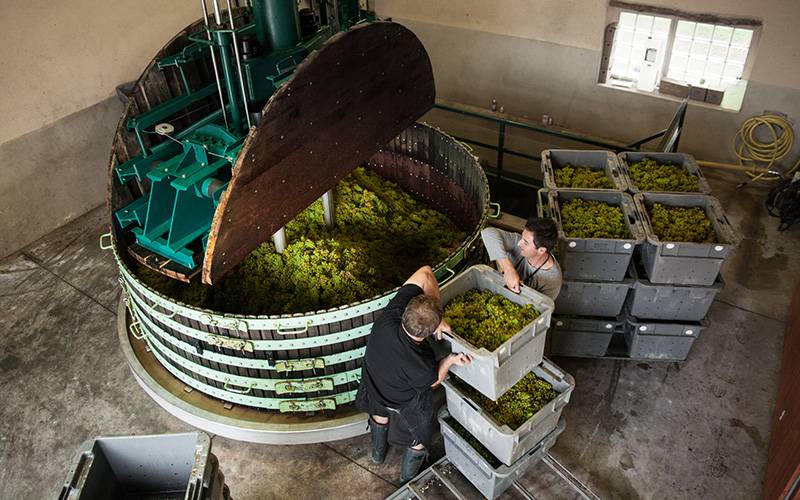In the world of winemaking, there are countless terms that we use to discuss eco-conscious wines: natural, organic, biodynamic, sustainable, unfined and unfiltered, hand-harvested, single-vineyard, low-intervention, and the list could go on. What this means is that when looking for a bottle of wine that aligns with our values, let alone with our palate and budget, it’s easy to become overwhelmed by industry jargon. To help cut through the vernacular clutter of the wine world, let’s zoom in on Champagne, a category of wine that celebrates its dense, specific vocabulary with a toast.
What is Champagne?
Champagne is a sparkling wine made in the Champagne appellation of France. To be classified as Champagne, the grapes used in winemaking must be Pinot Noir, Pinot Meunier, and/or Chardonnay (small amounts of Pinot Blanc, Pinot Gris, Arbane, and Petit Meslier are also permitted). The grapes used to make a bottle of Champagne must be hand-harvested.
All Champagne is made with the méthode traditionnelle (the traditional method, also known as méthode Champenoise, or Champagne method). This labor-intensive winemaking practice entails fermenting the pressed grape juice into a wine base for bottling, then the wine undergoes a secondary fermentation inside the bottle to create bubbles. Winemakers then add a liqueur de tirage (a solution of yeast and sugar) to the bottles to initiate a secondary fermentation that produces both carbon dioxide and lees (spent yeast cells) which collect in the neck of the bottle during the remuage (or riddling). Riddling is the process of periodically rotating a bottle a quarter turn while simultaneously tilting it upside down.

This sediment is finally disgorged from the bottle and replaced with a dosage (a solution of wine and sugar), creating a clear, sweet, bubbly wine. After all of this, the wine must age for another 15 months for non-vintage Champagne or a minimum of three years to receive a vintage designation.
The category of Champagne can be a sticky one, and not just because of the wine’s residual sugar content. Folks sometimes use Champagne as a catch-all term for all sparkling wines even though it refers to a very specific subset of this larger category. Culturally, Champagne has a reputation for being synonymous with excess and wealth, making it feel like a luxury beverage not accessible to the everyday consumer. We also typically associate Champagne with large Champagne houses (or Maisons) that have worldwide name recognition and distribution infrastructure — think Möet & Chandon, Veuve Clicquot, and Laurent-Perrier. All of these things can be true, but do not encapsulate the wonderful wines we call as “grower” Champagnes.
What is a grower Champagne?
In the wine community, the phrase “grower Champagne” acts as a secret handshake that shows you’re in the know when it comes to unique, delicious, and eco-conscious bottles of bubbles. Grower Champagne is Champagne that is made and bottled by the same person who grew the grapes. This practice is in contrast to wines made by Champagne houses (like those mentioned above) whose wines consist of juice from grapes harvested by dozens of individual vignerons (growers) from across the region. There are 15,000 unique growers in Champagne and only 26% bottle their own wine, amounting to 5,000 cases annually. Of all of the Champagne imported to the US, less than 5% qualifies as grower Champagne.
What makes grower Champagne so special is the distinct expression of flavors that vary from bottle to bottle. While Maison Champagne blends wines in the pursuit of creating a unified, consistent product, grower Champagne is more representative of a site’s specific terroir. Every bottle of grower Champagne is uniquely representative of the soils, atmospheric conditions, and viticultural practices that impacted the grapes of a particular growing season. Grower champagnes range from light, crisp, and mineral driven to full-bodied, fruit-forward, and mouth-coating. They can mirror the traditional Champagne palate of brioche and apples that you’ve grown fond of while drinking Maison Champagne, or they can be funky and unexpected examples of the contemporary natural wine movement. All of these wines highlight the delicious potential of the Champagne region without being beholden to the limitations that come with high-volume production.
How is climate change affecting Champagne?
In the past 20 years, temperatures have increased 1.2ºC in Champagne, a historically cool-climate wine region. This increase in temperature accelerates the ripening process of the grapes, which isn’t necessarily bad news for Champagne producers who use plump, high-sugar content grapes to begin with. This does, however, put the grapes at risk of over-ripening if not monitored carefully.
Winemakers in Champagne are concerned with extreme weather patterns that come with climate change.
Most winemakers in Champagne are more concerned with the unpredictable, sometimes extreme, weather patterns that come along with climate change. Extended periods of rain or drought, early heat waves and late frosts – all disrupt the slow, consistent growing patterns of the vines. Instances of hail bruise fruits and damage plants in ways that reduce overall yield.
Growers represent 90% of land ownership in Champagne and work collectively to set standards for the region. By supporting growers when you opt to buy a grower Champagne over one from a large Champagne house, you are giving the growers more power to make decisions without concern for repercussions from corporate stakeholders in the industry. Growers in Champagne organize through the Comité Champagne and have committed to ensuring all wine growers are participating in environmentally conscious practices in keeping with their unique viticultural circumstances. In keeping with these principles, collective action of vignerons has made it possible for 100% of water used in making Champagne to be treated and reused, and for CO2 emissions in production to have decreased 20% per bottle of Champagne.
How to Find Grower Champagne
To track down your own bottle of grower Champagne, your best bet is to chat with the folks who work at your local bottle shop or wine bar — wine nerds are always excited to show off their favorite bubbles and point you to a fun foray into the world of grower Champagne. Additionally, when looking at a bottle of Champagne, you can crack the code on the label.
There are seven official producer types denoted on bottles of Champagne by a two-letter code often printed in small font somewhere on the label. These are the most common designations you’ll see:
- NM (Négociant Manipulant): a producer who buys all or some of their grapes from other growers. This includes Champagne houses.
- RM (Récoltant Manipulant): a grower-producer who uses a minimum of 95% estate fruit. This is a typical hallmark that you’ve found a bottle of grower Champagne, though some Maisons have this designation for smaller sub-labels.
- RC (Récoltant Coopérateur): a grower-producer who has their own Champagne brand produced at a co-op facility. This practice is common for smaller growers who are unable to have a production facility on-site.
The additional designations are:
- SR (Société de Récoltants): a union of growers who share resources and market their own brands collectively.
- CM (Coopérative Manipulant): a co-op of growers that pool resources to produce wine under a single brand.
- MA (Marque d’Acheteur): a retail or restaurant business that buys a finished wine to sell under a private label.
- ND (Négociant Distributeur): a buyer who labels and distributes Champagne that they neither grow nor produce.
Julia Cooper’s Good Libation: Barrat-Masson “Fleur de Craie” Blanc de Blancs Extra Brut Champagne

“Fleur de Craie” is a blanc de blancs. This means it is made entirely from white grapes, in this case Chardonnay. Blanc de blancs is in contrast from a blanc de noirs, which is made entirely from red grapes.
“Fleur de Craie” is also extra brut, meaning it contains between 0 and 6g/L of residual sugars. Residual sugar is sugar that was not converted into alcohol by yeast during the fermentation process and is especially typical in champagne due to the addition of dosage. Extra brut is only exceeded in dryness by brut nature (between 0 and 3g/L of residual sugar). On the Champagne sweetness scale there is also brut (between 0 and 12g/L of residual sugar), extra dry (between 12 and 17g/L of residual sugar), dry (or secco, between 17 and 32g/L of residual sugar), demi-sec (between 32 and 50g/L of residual sugar), or doux (50g/L or more of residual sugar).
This Champagne is a limited production effort from Aurélie Barrat and Loïc Masson, a husband and wife team dedicated to organic viticultural practices. They replaced traditional herbicides on Loïc’s family vineyard to natural treatments in 2005 and have been practicing organic viticulture since 2009. Currently, they’re certified organic by Ecocert.
“Fleur de Craie” is made from Chardonnay grown on the vineyard’s chalky soils. It displays great aromatic complexity and finesse, with hints of pear, white flowers, and roasted nuts. This Champagne is crisp, zesty, and ready to liven up a celebration!


